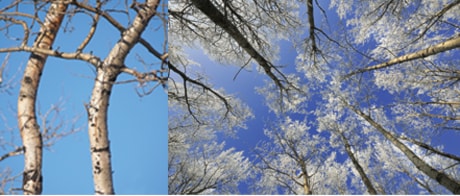For the past few years, I’ve had a bit of a photographic obsession with aspen poplar (Populous tremuloides) trees.
I learned in an ecology course that poplars grow in clones, but I’d made only cursory notice of them in my travels over the years. I had observed that they were small and stunted in the dry and windy regions of the province but towered to massive heights where growing conditions were more favourable.
In spring, I noticed that some trees leafed out earlier than others. In the fall, I admired the woods when they became emblazoned with patchworks of yellow and orange.
It was on a quiet drive home one late fall afternoon when everything changed. The magical mixing of a low sun, a sleepy soft haze and a stand of distinctive-looking aspens caused me to take more careful note.
From that moment of really “seeing” poplars, my sojourns along highways and byways have been enriched (and usually take longer!) by observing and photographing the artistic beauty and amazing diversity of these, our most common trees.
All the trees (called suckers) in each aspen clone are identical expressions of the same root. Clones can range from two to several hundred trees and, although the individual stems are relatively short-lived, the clone itself can keep sending out new suckers for centuries.
Each tree will grow to be the same size and exhibit the same unique colour, trunk shape and branching structures as all the others. They will even lean in the same direction and break off at the same point when they die.
They burst into green at the same moment in the spring and turn in unison to their own distinctive shades of yellow or orange in the fall. And they will finally yield their leaves back to the earth in a unified flutter.
After several years of observation and many hundreds of photographs, I am still amazed by the diversity of clone shapes, colours, sizes and patterns.
Amazing also is the fact that the world’s heaviest known living organism is a poplar clone in Utah. It covers 106 acres, contains around 47,000 suckers and is estimated to be 80,000 years old. It weighs 6,615 tonnes.
Winter is a good season to observe poplar clones because their unique characteristics are easy to pick out. The next time you’re out walking or driving, take a good look at the aspens that grace our backyards, neighbourhoods and driving routes. You’ll be impressed by what you see.
Myrna Pearman is a biologist and site manager at the Ellis Bird Farm. contact her at mpearman@ellisbirdfarm.ca
